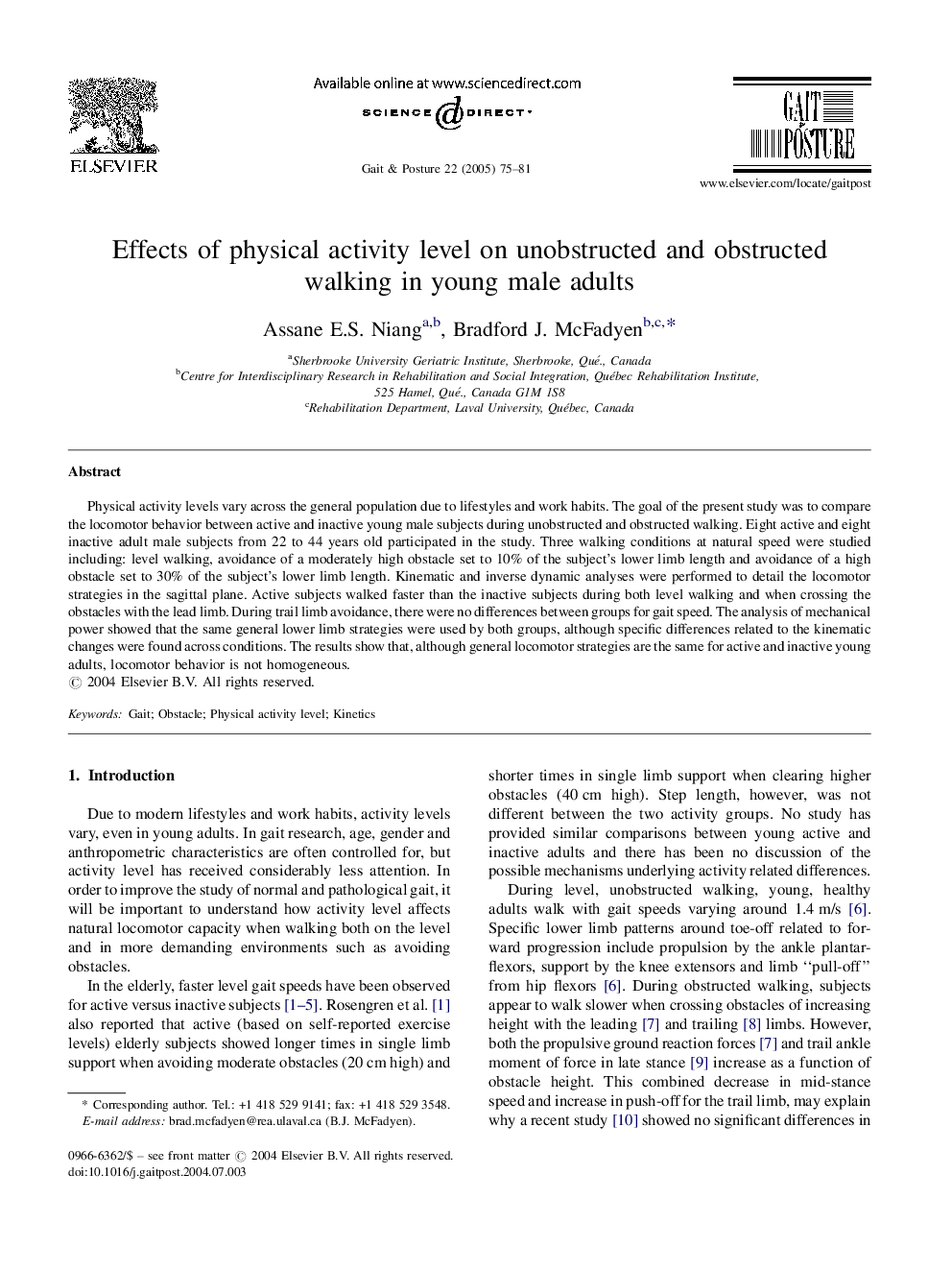| Article ID | Journal | Published Year | Pages | File Type |
|---|---|---|---|---|
| 9352788 | Gait & Posture | 2005 | 7 Pages |
Abstract
Physical activity levels vary across the general population due to lifestyles and work habits. The goal of the present study was to compare the locomotor behavior between active and inactive young male subjects during unobstructed and obstructed walking. Eight active and eight inactive adult male subjects from 22 to 44 years old participated in the study. Three walking conditions at natural speed were studied including: level walking, avoidance of a moderately high obstacle set to 10% of the subject's lower limb length and avoidance of a high obstacle set to 30% of the subject's lower limb length. Kinematic and inverse dynamic analyses were performed to detail the locomotor strategies in the sagittal plane. Active subjects walked faster than the inactive subjects during both level walking and when crossing the obstacles with the lead limb. During trail limb avoidance, there were no differences between groups for gait speed. The analysis of mechanical power showed that the same general lower limb strategies were used by both groups, although specific differences related to the kinematic changes were found across conditions. The results show that, although general locomotor strategies are the same for active and inactive young adults, locomotor behavior is not homogeneous.
Related Topics
Health Sciences
Medicine and Dentistry
Orthopedics, Sports Medicine and Rehabilitation
Authors
Assane E.S. Niang, Bradford J. McFadyen,
